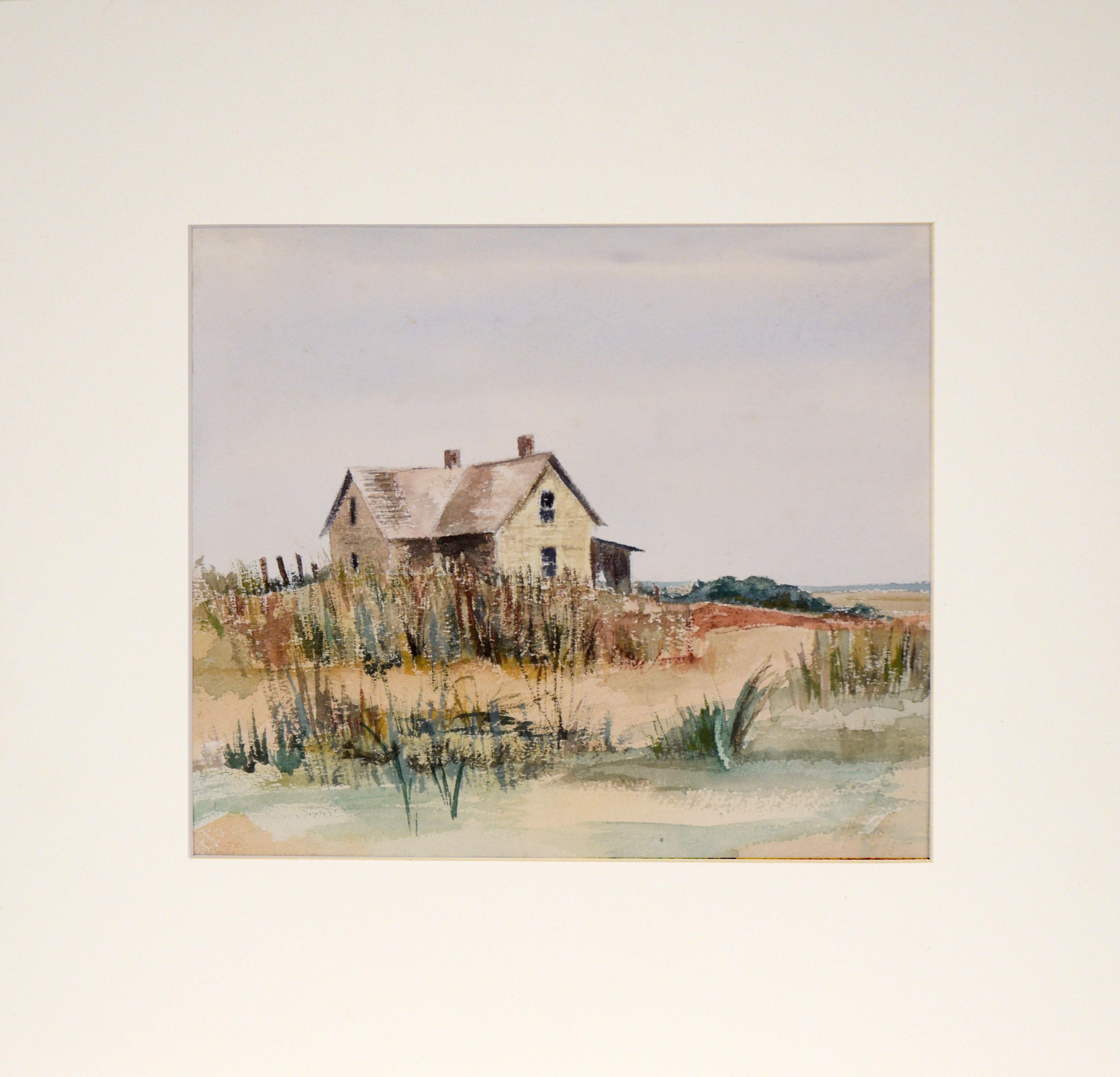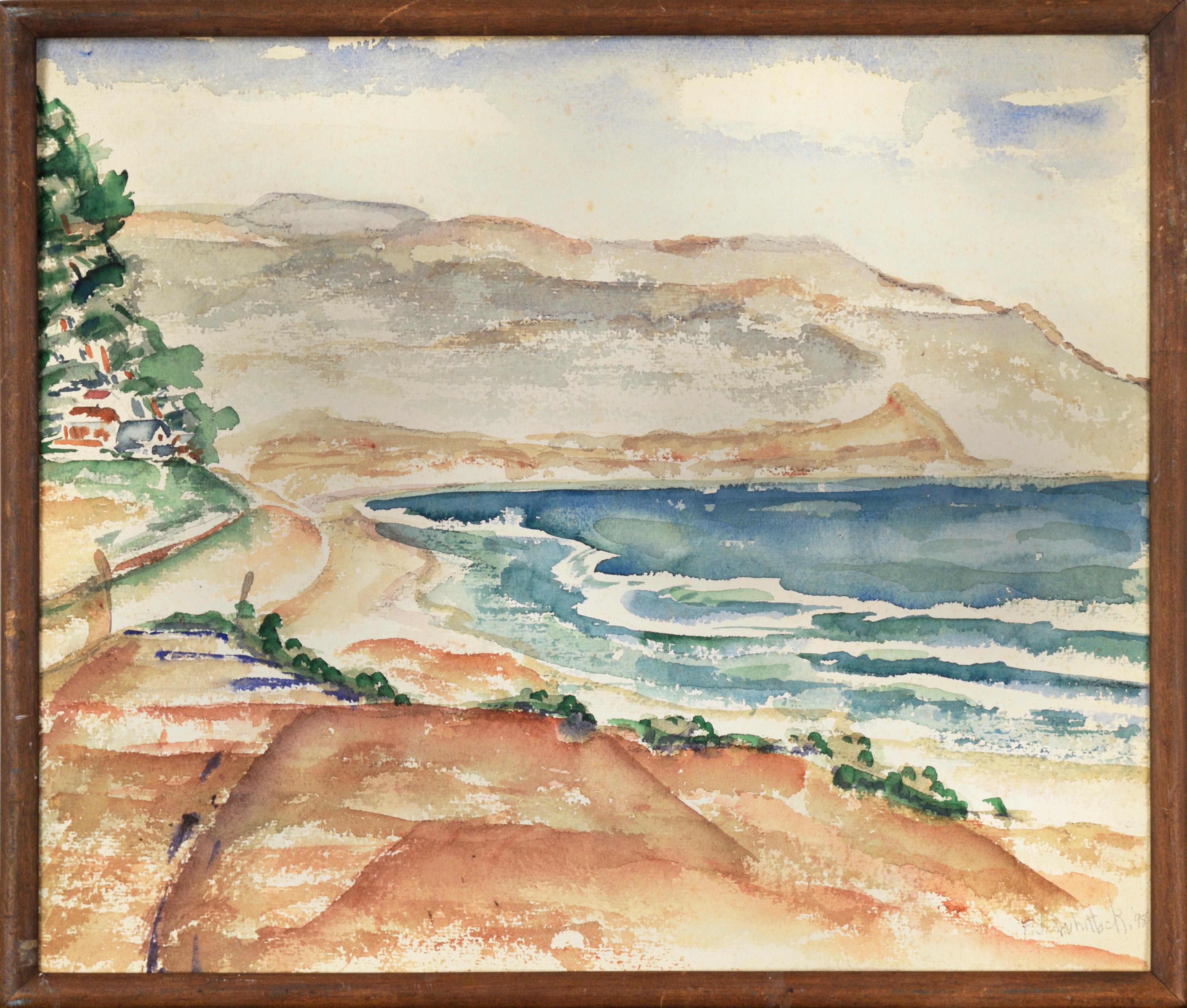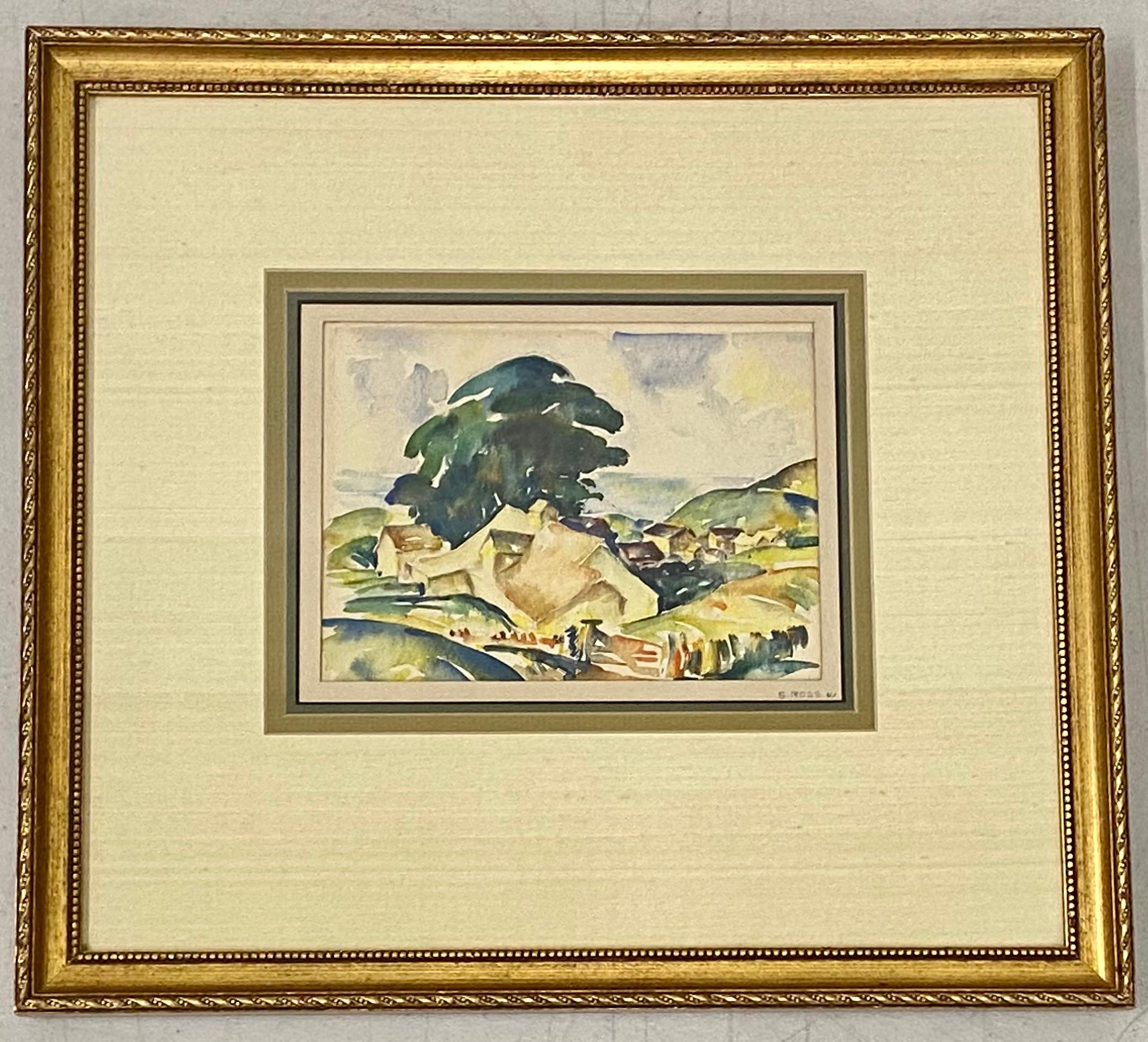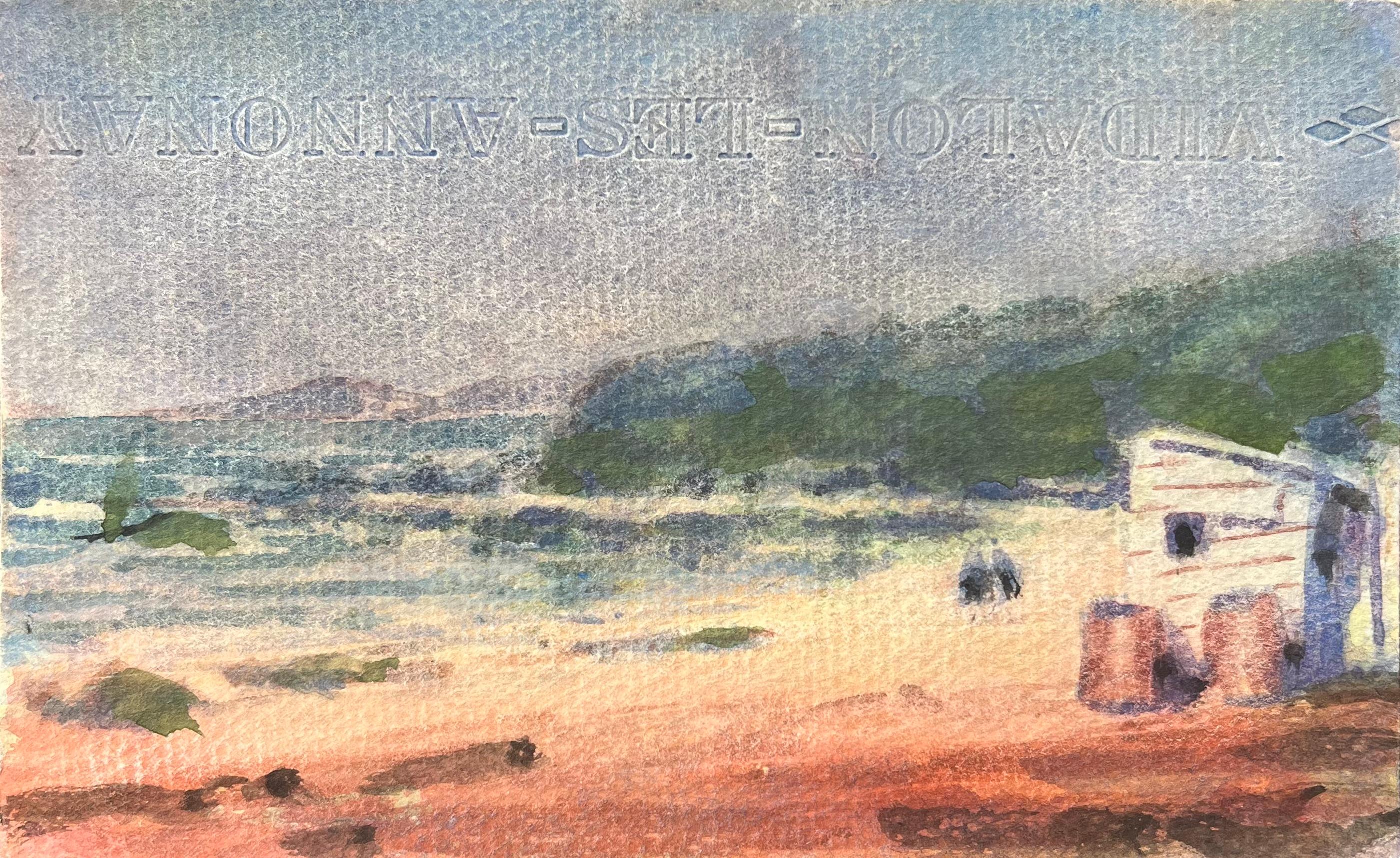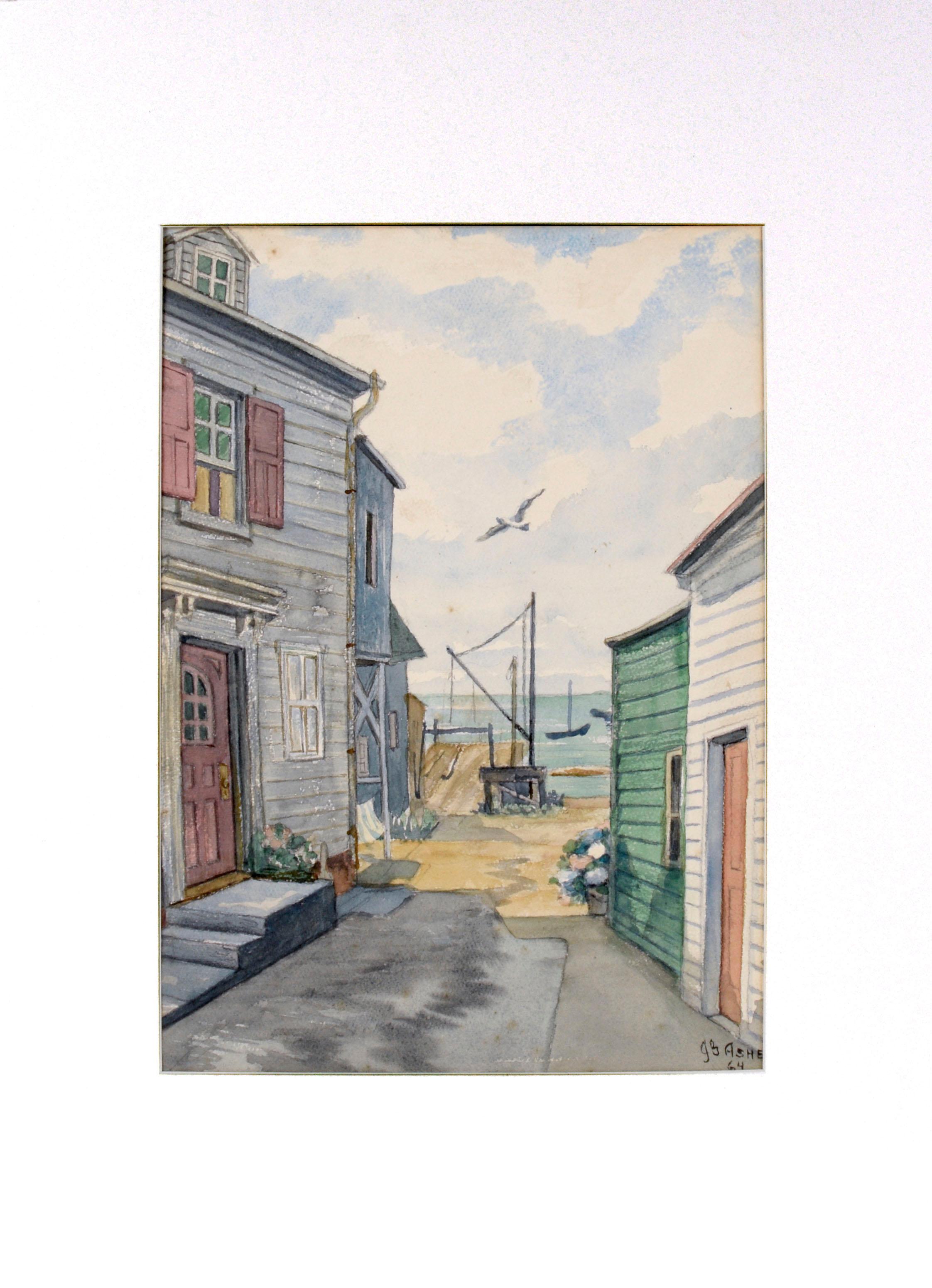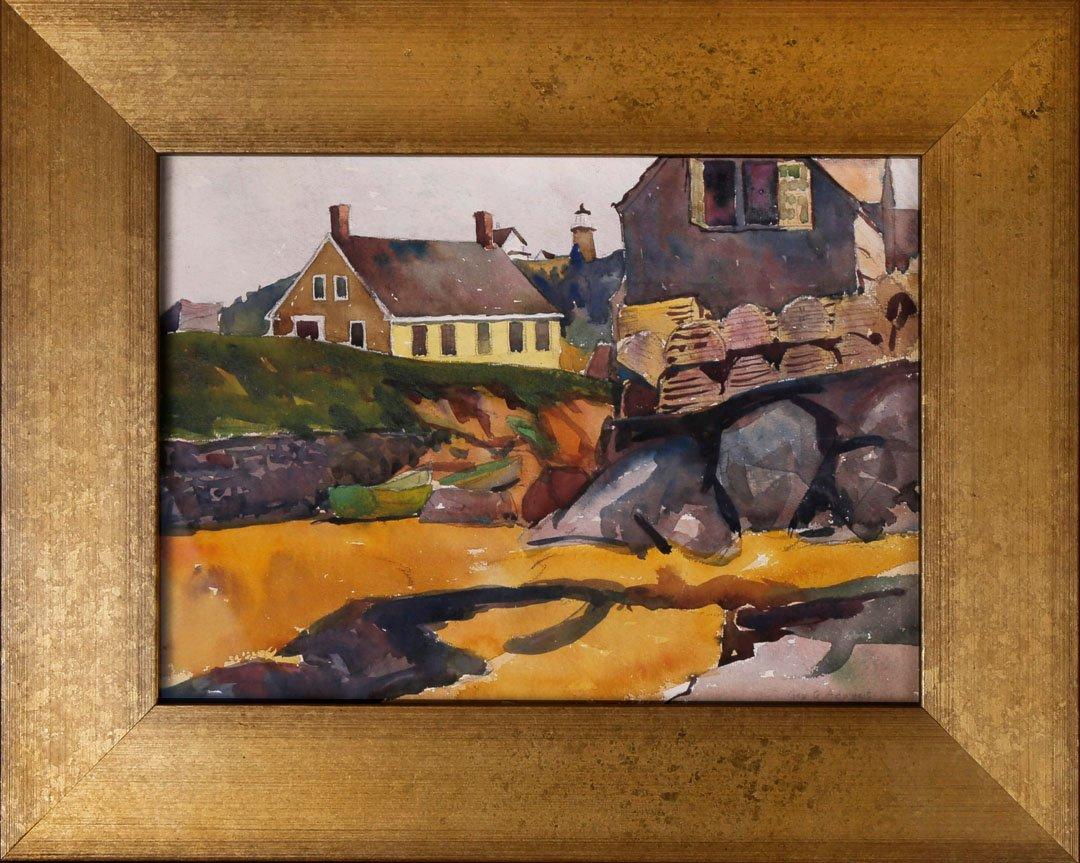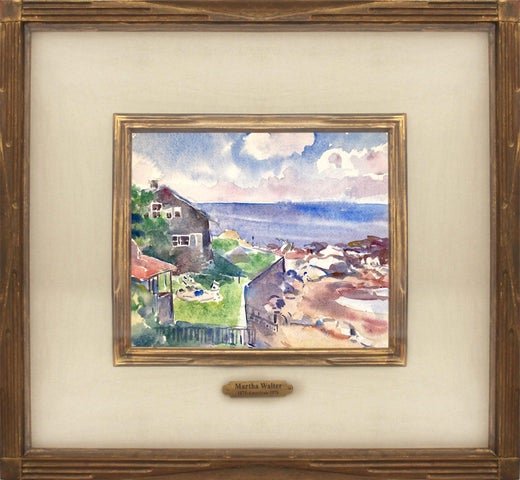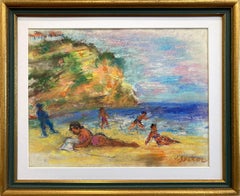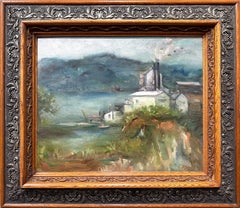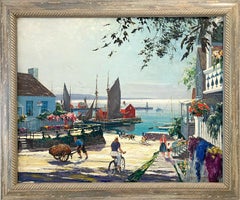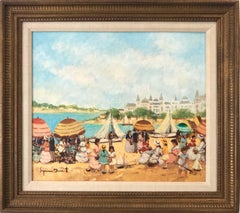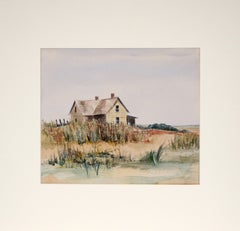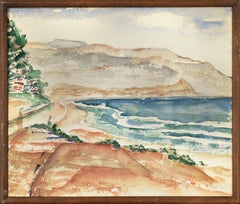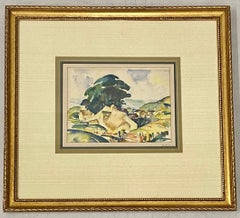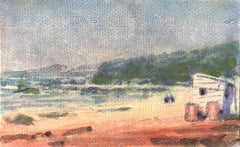Items Similar to "Beach House Scene" American Impressionist Coastal Landscape Watercolor on Paper
Want more images or videos?
Request additional images or videos from the seller
1 of 22
Martha Walter"Beach House Scene" American Impressionist Coastal Landscape Watercolor on Paper20th Century
20th Century
$6,000
£4,546.14
€5,216.33
CA$8,442.97
A$9,281.15
CHF 4,877.74
MX$112,706.91
NOK 60,848.63
SEK 57,649.80
DKK 38,930.81
About the Item
This piece is a playful depiction of a beach house scene of the ocean, sand, and view of a house with its garden with joyful colors and precious details, representing a pertinent example of Martha Walter's most iconic landscapes. Her use of the pallet is effortless with bold brushwork, strong executions, and soft details. Walter's was in the same league as many established and well-known men painters of her time such as Monet and Degas. For her work to be accepted on their same caliber was almost unheard of during the early 20th Century. This piece exhibits this caliber, as her technique shines with confidence and beauty. This painting is housed in a beautiful plain air style wood frame with UV-protective glass with hanging wire on verso ready to be displayed.
Art measures 9.75 x 11.25 inches
Frame measures 20.75 x 22.5 inches
Martha Walter was an acclaimed American Impressionist painter, and one of the premier female artists to be recognized within the fine arts community of the time. Known for her bright plein air beach scenes and domestic portraits, she studied under William Merritt Chase and was greatly influenced by the then-established French Impressionists Edgar Degas, Camille Pissarro, Claude Monet, and Eugène Boudin. Walter's works took on a looser style; she also used black paint, a color often excluded by other Impressionists.
PROVENANCE: Martha Walter Estate; The Turak Gallery; Private Collection Manhattan, New York; Lilac Gallery Collection. The piece will be stamped from Lilac Gallery on its verso.
- Creator:Martha Walter (1875-1976, American)
- Creation Year:20th Century
- Dimensions:Height: 20.75 in (52.71 cm)Width: 22.5 in (57.15 cm)Depth: 1.5 in (3.81 cm)
- Medium:
- Movement & Style:
- Period:
- Condition:The painting is in excellent condition, its a double-sided artwork and we can provide pictures of both sides upon request. It comes displayed in an original frame that shows some ordinary wear from age and minor imperfections in line with the period.
- Gallery Location:New York, NY
- Reference Number:Seller: 0017071stDibs: LU9821805373
Martha Walter
Walter was born in Philadelphia in 1875. She enrolled at the Pennsylvania Academy of the Fine Arts, where she studied under William Merritt Chase, who became her primary mentor. At his insistence, she entered a number of Academy student competitions and eventually won a prestigious Cresson Traveling Scholarship in 1908. This award enabled her to travel throughout Europe, where she continued her art education at the Grande Julien in Paris. Soon disenchanted with the academicism of the Parisian schools, Walter set out on her own and began producing plein-air paintings in the manner of the French Impressionists. At the outbreak of World War I, she returned to the United States and took up painting at various East coast beach resorts such as Coney Island and Gloucester. In her beach scenes of this period, colorful bathing suits, gowns and umbrellas punctuate a tranquil, pastel surface. Her expertise in the treatment of light and shadow is evident in her depictions of these settings at various times of day.
In 1922, she spent some months painting the thousands of immigrants kept in the detention hall at Ellis Island. The dreadful, crowded conditions inspired a group of paintings that were exhibited that year in the Galerie Georges Petit in Paris. One was selected for the permanent collection of the Musée de Luxembourg. An exhibition at the Art Club of Chicago in 1941 featured a group of watercolor paintings inspired by the artist's travels through Spain and North Africa. These works were intensely colored visions of such subjects as Algerian street scenes, mosques and Spanish fishermen.
Walter worked well into her nineties, continuing to paint portraits of women and children, beach scenes, gardens and marketplaces. Before her death in 1976, she had exhibited widely, and her works are included in major national and international private and public collections. Hammer Galleries had several exhibitions of her work during her lifetime, the last taking place in 1975 when the artist was one hundred years old.
About the Seller
5.0
Platinum Seller
Premium sellers with a 4.7+ rating and 24-hour response times
Established in 2012
1stDibs seller since 2015
1,792 sales on 1stDibs
Typical response time: 1 hour
- ShippingRetrieving quote...Shipping from: New York, NY
- Return Policy
Authenticity Guarantee
In the unlikely event there’s an issue with an item’s authenticity, contact us within 1 year for a full refund. DetailsMoney-Back Guarantee
If your item is not as described, is damaged in transit, or does not arrive, contact us within 7 days for a full refund. Details24-Hour Cancellation
You have a 24-hour grace period in which to reconsider your purchase, with no questions asked.Vetted Professional Sellers
Our world-class sellers must adhere to strict standards for service and quality, maintaining the integrity of our listings.Price-Match Guarantee
If you find that a seller listed the same item for a lower price elsewhere, we’ll match it.Trusted Global Delivery
Our best-in-class carrier network provides specialized shipping options worldwide, including custom delivery.More From This Seller
View All"Sun Bathers by the Shore" Post-Impressionist Oil Painting on Paper Framed
By Jacques Zucker
Located in New York, NY
This painting depicts a whimsical scene of sun bathers by the sea shore with the coast in the background. The bright colors and quick brush strokes are what makes this painting so at...
Category
20th Century Post-Impressionist Landscape Paintings
Materials
Oil, Archival Paper
"Harbor View" Post-Impressionist Landscape Scene Oil Painting on Canvas Framed
By Jacques Zucker
Located in New York, NY
This painting depicts a whimsical landscape of an industrial town harbor with the village houses and buildings ashore, with a few boats docked and at the distance in the background, ...
Category
20th Century Post-Impressionist Landscape Paintings
Materials
Canvas, Oil
"Rockport, Massachusetts" Pastoral Summer Seaside Town Landscape Oil Painting
By Carl Ivar Gilbert
Located in New York, NY
The painting depicts a vibrant, sunlit coastal village in Rockport Massachusetts, set in the 20th Century, exuding a cheerful and nostalgic mood...
Category
20th Century American Impressionist Landscape Paintings
Materials
Oil, Canvas
"Summer Day at Nice" French Beach Scene Impressionistic Oil Painting on Canvas
By Suzanne Demarest
Located in New York, NY
A stunning oil painting scene depicting figures by the beach in a sunny day at Nice, France done in the 20th Century. The vibrant colors and impressionistic brushwork is done with bo...
Category
Early 20th Century American Impressionist Landscape Paintings
Materials
Canvas, Oil
"Buildings at the Pier" Impressionist Outdoor Port Scene Oil Painting on Canvas
By Jacques Zucker
Located in New York, NY
This painting depicts an outdoors scene of a small port with boats in the water. The fun details are what make this painting so attractive and desirable. The piece is done in a highl...
Category
20th Century Impressionist Landscape Paintings
Materials
Canvas, Oil
"Connecticut Seascape" Post-Impressionist Costal Oil Painting on Canvas Framed
By Jacques Zucker
Located in New York, NY
This painting depicts a whimsical seascape of a Connecticut town with the village houses and buildings ashore, with a few boats anchored in the area. The bright colors and quick brus...
Category
20th Century Post-Impressionist Landscape Paintings
Materials
Canvas, Oil
You May Also Like
Farmhouse by the Sea - Original Watercolor on Paper
Located in Soquel, CA
Farmhouse by the Sea - Original Watercolor on Paper
Tranquil landscape of a seaside farmhouse on the sand surrounded by coastal plants, in soft neutral watercolors. A distant ocean s...
Category
Late 20th Century American Impressionist Landscape Drawings and Watercolors
Materials
Paper, Watercolor
$300 Sale Price
20% Off
Hermosa Beach Coastline - Watercolor On Paper
Located in Soquel, CA
Hermosa Beach Coastline - Watercolor On Paper
Watercolor painting depicting the Hermosa Beach coastline by California artist F.J. Whitlock (American, B- 1923 ). Vibrant hues of blue...
Category
1940s American Impressionist Landscape Paintings
Materials
Paper, Watercolor
$440 Sale Price
20% Off
Sinclair Howell Ross "Cottage with an Ocean View" Original Watercolor c.1941
Located in San Francisco, CA
Sinclair Howell Ross "Cottage with an Ocean View" Original Watercolor c.1941
Original watercolor on paper
Watercolor dimensions 8" wide x 6" high
The frame measures 17.25" wide x ...
Category
Early 20th Century Impressionist Landscape Drawings and Watercolors
Materials
Watercolor
French Impressionist Watercolor of a Coastal Scene with Outbuildings
Located in Cirencester, Gloucestershire
Title: French Impressionist Watercolor of a Coastal Scene with Outbuildings
By Maurice Mazeilie (French 1924-2021)
Medium: Watercolor on paper, unframed
Size: 4 x 6.5 inches (Height ...
Category
20th Century Impressionist Drawings and Watercolor Paintings
Materials
Watercolor
Seaside Street View - Original Watercolor in the Style of Henry Martin Gasser
Located in Soquel, CA
Seaside Street View - Original Vintage Watercolor Painting in the Style of Henry Martin Gasser (1964)
A charming seaside street leads to the sand with brilliant 1-point perspective,...
Category
1960s Impressionist Landscape Drawings and Watercolors
Materials
Paper, Watercolor
Beachside Village, Maine, 20th century landscape watercolor, Cleveland School
By George Adomeit
Located in Beachwood, OH
George Gustav Adomeit (American, 1879-1967)
Beachside Village, Maine
Watercolor on paper
Signed lower right
10 x 14 inches
17.75 x 21.75 inches, framed
A major painter of American ...
Category
Mid-20th Century American Modern Figurative Drawings and Watercolors
Materials
Watercolor
More Ways To Browse
Antique Wood Plains
Eugene Claude
House Of Sand
William Burn
1930s Beach
36x48 Landscape Oil Painting
Andre Gisson
Antique Millstones
Antique Wheelchair
Benjamin Thomas Paintings
Boat Painting Impressionist Large
California Foothills
California Plein Air Art
California Wildflowers
Campbell Mellon
Caribbean Oil Paintings
Charles M Russell
Chrysler Building Painting
